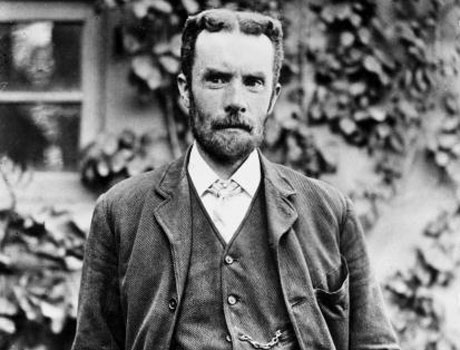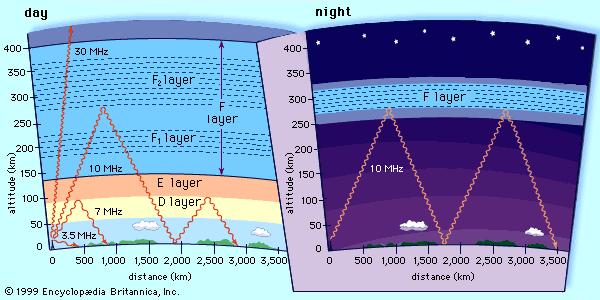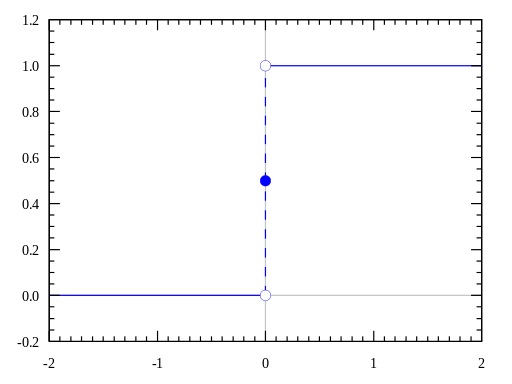Oliver Heaviside
Page created by Lee Martin Frazer.

Oliver Heaviside (18 May 1850 – 3 February 1925) was a self taught physicist, mathematician, and electrical engineer. Despite being fairly unknown, Heaviside had more academic contributions than almost any other person in history. His contributions include but are not limited to the Heaviside step function, operational calculus, vector calculus, the telegraphers equations, the coax cable, coining the terms reactance, impedance, and inductance, deriving the Lorenz force, proposing the existence of the ionosphere, the Poynting vector, and the currently used form of Maxwell's equations.
Biography
Oliver Heaviside was born to poverty in 1850 in the London slum of Camden Town. Camden Town is the same slum distinguished author Charles Dickens was from. Heaviside was the child of water color artist and wood engraver Thomas Heaviside and Rachel West. At a young age Oliver contracted the scarlet fever which left him partially deaf. He was a top student in all subjects except geometry; however, by the age of 16 Heaviside had dropped out of school and began to teach himself.
Despite being born of little means, Heaviside was lucky because his maternal uncle by marriage was Charles Wheatstone. Wheatstone was a well-known inventor and electrical scientist who co-invented the telegraph among other accomplishments. Wheatstone took great interest in his nephews and was likely involved with Oliver’s first job as a telegraph operator. Heaviside rapidly became the head operator for the Great Northern Telegraph company. This would be Heaviside’s only full-time employment he would ever have. Around 1873 Heaviside quit his job and begin devoting his entire life to scientific and mathematical research and development.
He began his independent work by reducing Maxwell’s equation. It was Heaviside that created the current four vector equations with two variables used to describe electric charges and induction. In addition, he made large contribution to vector calculus and created operational calculus. He also created the Heaviside step function and made large contributions in the field of electrical engineering. He suggested the use of induction coils, invented the coax cable, and coined many of the commonly used electrical terms used today. One of his other main accomplishments was the proposal of the ionosphere. Sadly Heaviside never gain recognition for any of his accomplishments.
Possibly because of lack of recognition for all of his incredible accomplishments, Heaviside became rather strange in his late life. It is reported the furniture in his home consisted mainly of large granite blocks. He also began painting his finger nails pick and ending letters with the puzzling initials “W.O.R.M” written after his signature. Heaviside died on February 3rd, 1925 a basically unknown name.
Physics

Oliver Heaviside recasted Maxwell's equation into vector form. He was able to reduce Maxwell's original twenty equations with twenty variables into four vector equations with only two variables. This is the form that every physicists uses to describe moving and static electric charges and magnetic dipole in addition to electromagnetic induction. In addition Heaviside derived the Lorenze for and discovered the poynting vector.
One of Heaviside's other large accomplishments is his proposal of the existence of the ionsphere. He suggested that this ionsphere could be used to transmit radio signals back to earth because they would follow the curvature of the Earth. This theory was finally verified in 1923.
Mathematics

Heaviside is probably post famous for the Heaviside step function shown to the right. This function is commonly used in control theory and signal processing, represents a signal that switches on at a certain time stay on.
- [math]\displaystyle{ \Theta(x)=\begin{cases} 0, & x \lt 0, \\ 1/2, & x = 0,\\ 1, & x \gt 0, \end{cases} }[/math]
He also made essential contributions to Vector Calculus and created Operational Calculus, which allowed him to solve differential equations by transforming them into algebraic equations. This was controversial because he did not show any derivations; his work was initially rejected because of this and his statement regarding his criticisms is that “Mathematics is an experimental science, and definitions do not come first but later on.”
Electrical Engineering
In the realm of electrical engineering Heaviside created the telegraphers equations, also called transmission line theory. These equations are listed below.
- [math]\displaystyle{ \frac{\partial V}{\partial x} = -L \frac{\partial I}{\partial t} \qquad \qquad \frac{\partial I}{\partial x} =-C \frac{\partial V}{\partial t} }[/math]
where V is the voltage across the transmission line, I is the current through the transmission line, L is the inductance per unit length, and C is the capacitance per unit length.
In addition he proposed that induction coils should be located uniformly along telephone in order to decrease signal distortion. Heaviside again got no recognition for this idea. Michael Pupin of Columbia received the patent for the idea years later. He also Invented coax cable and coined the terms reactance, impedance, inductance, admittance, conductance, permeability, permittance, and reluctance in relation to electromagnetic theory.
See also
Further reading
- Heaviside, O. (2003). Electrical Papers: American Mathematical Society.
- Heaviside, O. (1950). Electromagnetic Theory. Oliver Heaviside. Complete and Unabridged Edition of Volume I... II and III with a Critical and Historical Introduction by Ernst Weber: Dover publications.
- Heaviside, O. (1892). On the Forces, Stresses, and Fluxes of Energy in the Electromagnetic Field: Harrison and Sons, Printers.
- Mahon, B. (2009). Oliver Heaviside: Maverick Mastermind of Electricity: Institution of Engineering and Technology.
- Nahin, P. J. (2002). Oliver Heaviside: The Life, Work, and Times of an Electrical Genius of the Victorian Age: Johns Hopkins University Press.
- Yavetz, I. (2011). From Obscurity to Enigma: The Work of Oliver Heaviside, 1872–1889: Birkhäuser Basel.
External links
- http://www.britannica.com/biography/Oliver-Heaviside
- http://www.aps.org/publications/apsnews/201002/physicshistory.cfm
- http://theinstitute.ieee.org/technology-focus/technology-history/did-you-know-someone-else-wrote-maxwells-equations
- http://www-gap.dcs.st-and.ac.uk/history/Biographies/Heaviside.html
- http://scitation.aip.org/content/aip/magazine/physicstoday/article/65/11/10.1063/PT.3.1788
- http://www.uh.edu/engines/epi426.htm
- http://www.theiet.org/resources/library/archives/biographies/heaviside.cfm
- https://archive.org/details/electricalpapers02heavrich
- https://archive.org/details/electromagnetict01heavrich
References
February 3,1925: Death of Oliver Heaviside. (2010). APS News, 19(2). Retrieved from http://www.aps.org/publications/apsnews/201002/physicshistory.cfm
Geselowitz, M. (2013). Did You Know? Someone Else Wrote Maxwell's Equations. Retrieved from The Institute: The IEEE News Source website: http://theinstitute.ieee.org/technology-focus/technology-history/did-you-know-someone-else-wrote-maxwells-
Hunt, B. J. (2012). Oliver Heaviside: A first-rate oddity. Physics Today, 65(11), 48-54. doi:doi:http://dx.doi.org/10.1063/PT.3.1788
Category: Notable Scientists